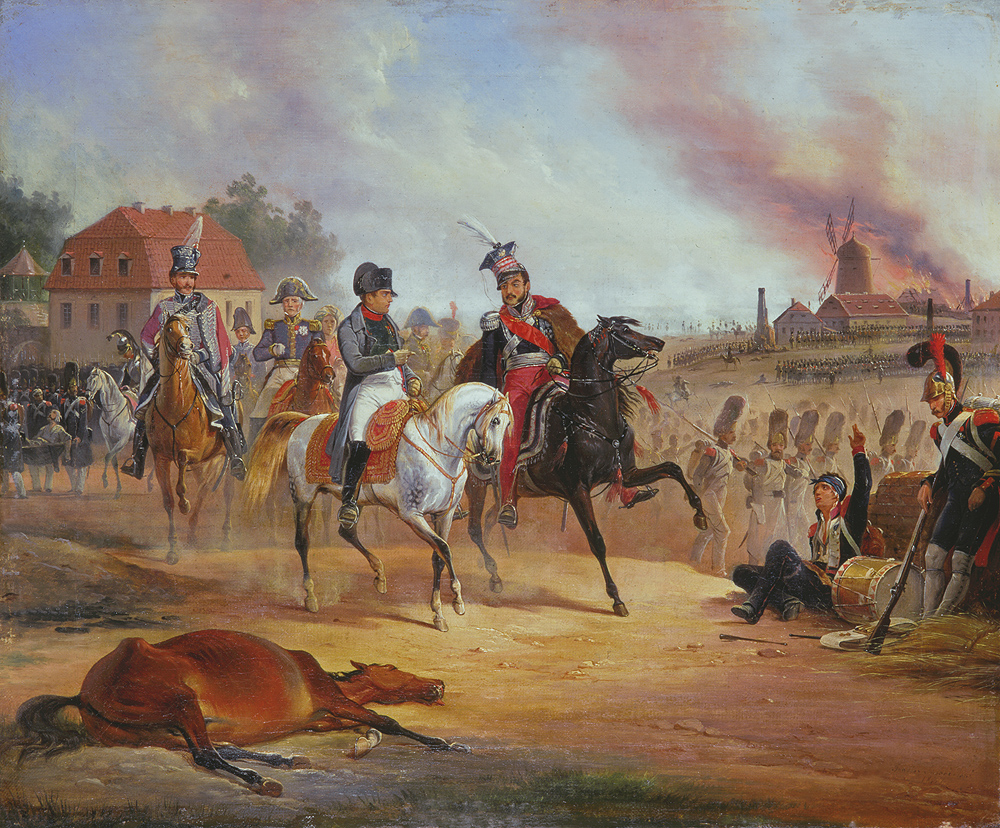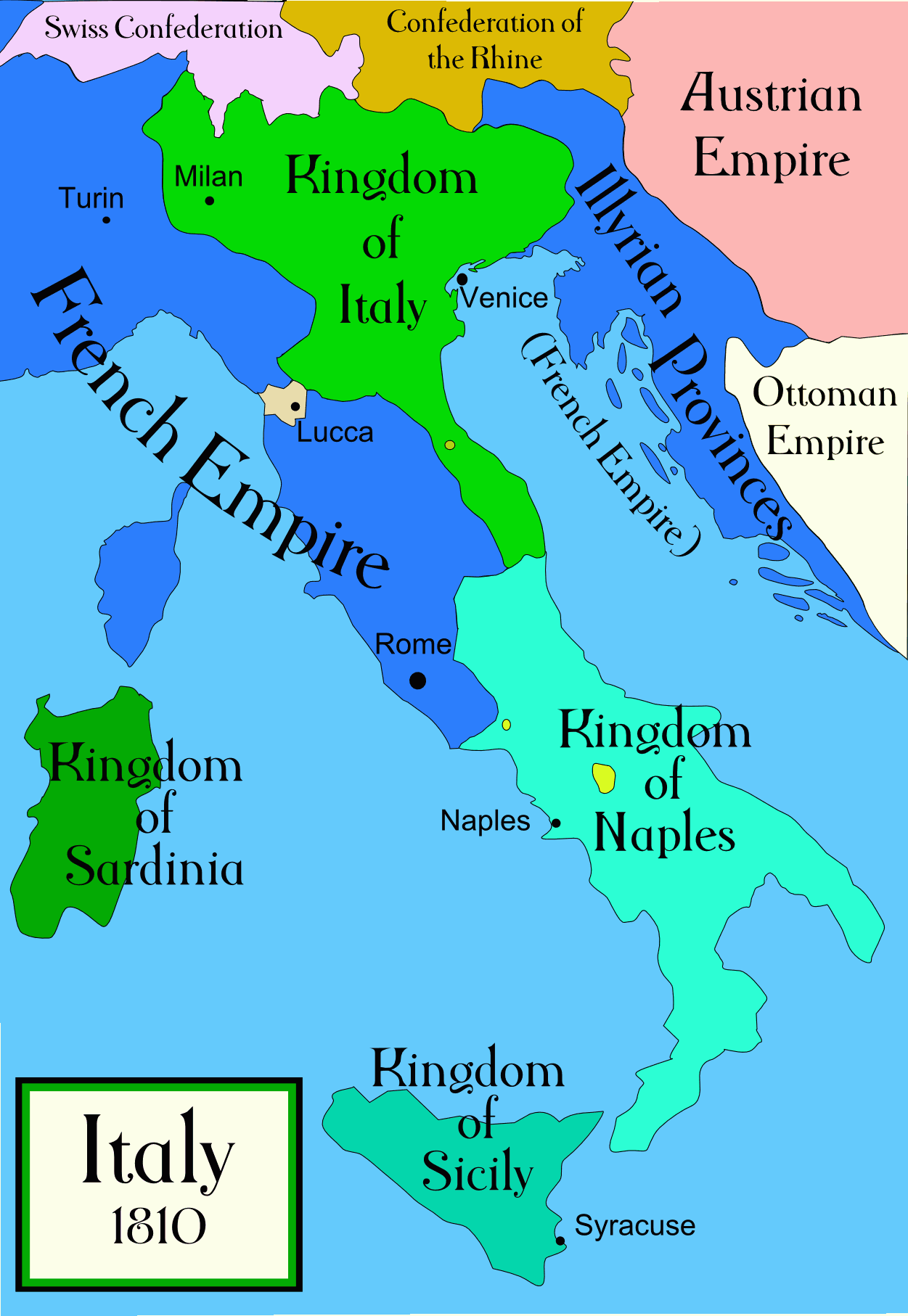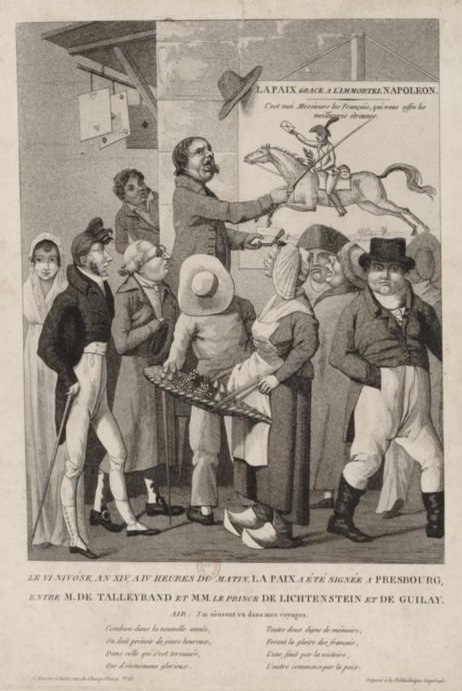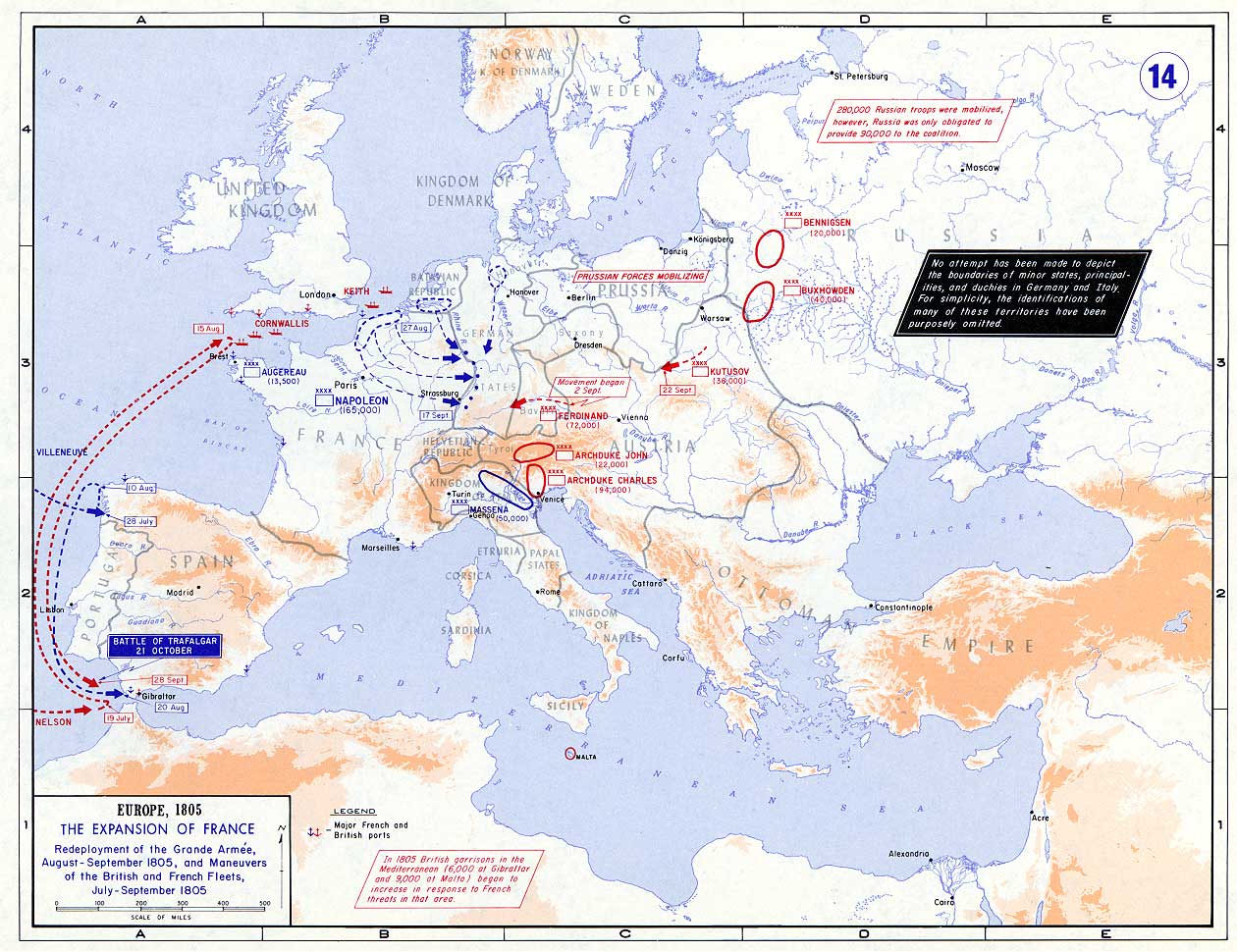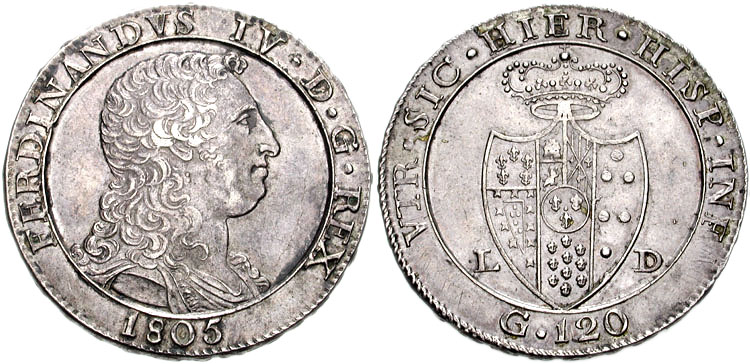|
Neapolitan War
The Neapolitan War, also known as the Austro-Neapolitan War, was a conflict between the Napoleonic Kingdom of Naples (Napoleonic), Kingdom of Naples and the Austrian Empire. It started on 15 March 1815, when King Joachim Murat declared war on Austria, and ended on 20 May 1815, with the signing of the Treaty of Casalanza. The war occurred during the Hundred Days between Napoleon's return from exile and before he left Paris to be decisively defeated at the Battle of Waterloo. The war was triggered by a pro-Napoleon uprising in Naples and ended with a decisive Austrian victory at the Battle of Tolentino, after which Bourbon monarch Ferdinand I of the Two Sicilies, Ferdinand IV was reinstated as King of Naples and Sicily. However, the intervention by Austria caused resentment in Italy, which further spurred on the drive towards Italian unification. Background Before the French Revolutionary Wars, Naples was ruled by House of Bourbon, Bourbon King Ferdinand IV. Ferdinand was a nat ... [...More Info...] [...Related Items...] OR: [Wikipedia] [Google] [Baidu] |
War Of The Seventh Coalition
The Hundred Days ( ), also known as the War of the Seventh Coalition (), marked the period between Napoleon's return from eleven months of exile on the island of Elba to Paris on20 March 1815 and the second restoration of King Louis XVIII on 8 July 1815 (a period of 110 days). This period saw the War of the Seventh Coalition, and includes the Waterloo campaign and the Neapolitan War as well as several other Minor campaigns of 1815, minor campaigns. The phrase ''les Cent Jours'' (the Hundred Days) was first used by the Prefect (France), prefect of Paris, Gaspard de Chabrol, Gaspard, comte de Chabrol, in his speech welcoming the king back to Paris on 8 July. Napoleon returned while the Congress of Vienna was sitting. On 13 March, seven days before Napoleon reached Paris, the powers at the Congress of Vienna declared him an outlaw, and on 25 March, Austrian Empire, Austria, Kingdom of Prussia, Prussia, Russian Empire, Russia and the United Kingdom of Great Britain and Ireland, ... [...More Info...] [...Related Items...] OR: [Wikipedia] [Google] [Baidu] |
Battle Of Leipzig
The Battle of Leipzig, also known as the Battle of the Nations, was fought from 16 to 19 October 1813 at Leipzig, Saxony. The Coalition armies of Austria, Prussia, Sweden, and Russia, led by Tsar Alexander I, Karl von Schwarzenberg, and Gebhard von Blücher decisively defeated the ''Grande Armée'' of French Emperor Napoleon Bonaparte. Napoleon's army also contained Polish and Italian troops, as well as Germans from the Confederation of the Rhine (mainly Saxony and Württemberg). The battle was the culmination of the German campaign of 1813 and involved about 560,000 soldiers, 2,200 artillery pieces, the expenditure of 400,000 rounds of artillery ammunition, and 133,000 casualties, making it the largest battle of the Napoleonic Wars, and the largest battle in Europe prior to World War I. Decisively defeated, Napoleon was compelled to return to France while the Sixth Coalition kept up its momentum, dissolving the Confederation of the Rhine and invading France early the ... [...More Info...] [...Related Items...] OR: [Wikipedia] [Google] [Baidu] |
Joseph Bonaparte
Joseph Bonaparte (born Giuseppe di Buonaparte, ; ; ; 7 January 176828 July 1844) was a French statesman, lawyer, diplomat and older brother of Napoleon Bonaparte. During the Napoleonic Wars, the latter made him King of Naples (1806–1808), and then King of Spain and the Indies (1808–1813). After the fall of Napoleon, Joseph styled himself ''Comte de Survilliers'' and emigrated to the United States, where he settled near Bordentown, New Jersey, on Pointe Breeze estate overlooking the Delaware River not far from Philadelphia. Early life and career Joseph was born in 1768 as Giuseppe Buonaparte to Carlo Buonaparte and Maria Letizia Ramolino at Corte, the capital of the Corsican Republic. In the year of his birth, Corsica was invaded by France and conquered the following year. His father was originally a follower of the Corsican patriot leader Pasquale Paoli, but later became a supporter of French rule. Bonaparte trained as a lawyer. In that role and as a politician and ... [...More Info...] [...Related Items...] OR: [Wikipedia] [Google] [Baidu] |
Treaty Of Pressburg (1805)
The Peace of Pressburg was signed in Pressburg (today Bratislava) on 26 December 1805 between French Emperor Napoleon Bonaparte and Holy Roman Emperor Francis II, as a consequence of the French victory over the Russians and Austrians at the Battle of Austerlitz (2 December). A truce was agreed on 4 December, and negotiations for the treaty began. The treaty was signed by Johann I Joseph, Prince of Liechtenstein, and the Hungarian Count Ignác Gyulay for the Austrian Empire and Charles Maurice de Talleyrand for France. Beyond the clauses establishing "peace and amity" and the Austrian withdrawal from the Third Coalition, the treaty also mandated substantial territorial concessions by the Austrian Empire. The French gains of the previous treaties of Campo Formio and Lunéville were reiterated, while recent Austrian acquisitions in Italy and southern Germany were ceded to France and Bavaria, respectively. The scattered Austrian holdings in Swabia were passed to French allies � ... [...More Info...] [...Related Items...] OR: [Wikipedia] [Google] [Baidu] |
Battle Of Austerlitz
The Battle of Austerlitz (2 December 1805/11 Frimaire An XIV French Republican calendar, FRC), also known as the Battle of the Three Emperors, was one of the most important military engagements of the Napoleonic Wars. The battle occurred near the town of Slavkov u Brna, Austerlitz in the Austrian Empire (now Slavkov u Brna in the Czech Republic). Around 158,000 troops were involved, of which around 24,000 were killed or wounded. The battle is often cited by military historians as one of Napoleon's tactical masterpieces, in the same league as other historic engagements like Hannibal's Battle of Cannae, Cannae (216 BC) or Alexander the Great's Battle of Gaugamela, Gaugamela (331 BC).Byron Farwell, Farwell p. 64. "Austerlitz is generally regarded as one of Napoleon's tactical masterpieces and has been ranked as the equal of Arbela, Cannae, and Leuthen."Trevor N. Dupuy, Dupuy p. 102 Note: Dupuy was not afraid of expressing an opinion, and he classified some of his subjects as Great ... [...More Info...] [...Related Items...] OR: [Wikipedia] [Google] [Baidu] |
Third Coalition
The War of the Third Coalition () was a European conflict lasting from 1805 to 1806 and was the first conflict of the Napoleonic Wars. During the war, France and its client states under Napoleon I and its ally Spain opposed an alliance, the Third Coalition, which was made up of the United Kingdom, the Austrian Empire, the Russian Empire, Naples, Sicily, and Sweden. Prussia remained neutral during the war. Britain had already been at war with France following the breakdown of the Peace of Amiens and remained the only country still at war with France after the Treaty of Pressburg. From 1803 to 1805, Britain stood under constant threat of a French invasion. The Royal Navy, however, assured its naval dominance at the Battle of Trafalgar in October 1805. The Third Coalition itself came to full fruition in 1804–05 as Napoleon's actions in Italy and Germany (notably the arrest and execution of the Duc d'Enghien) spurred Austria and Russia into joining Britain against France. T ... [...More Info...] [...Related Items...] OR: [Wikipedia] [Google] [Baidu] |
King Ferdinand IV
Ferdinand I (Italian: ''Ferdinando I''; 12 January 1751 – 4 January 1825) was King of the Two Sicilies from 1816 until his death. Before that he had been, since 1759, King of Naples as Ferdinand IV and King of Sicily as Ferdinand III. He was deposed twice from the throne of Naples: once by the revolutionary Parthenopean Republic for six months in 1799, and again by a French invasion in 1806, before being restored in 1815 at the end of the Napoleonic Wars. Ferdinand was born in Naples as the third son of King Charles VII and Queen Maria Amalia. In August 1759, Charles succeeded his half-brother Ferdinand VI of Spain as King Charles III, but treaty provisions made him ineligible to hold all three crowns. On 6 October, he abdicated his Neapolitan and Sicilian titles in favour of his third son, Ferdinand, because his eldest son Philip had been excluded from succession due to intellectual disability and his second son Charles was heir-apparent to the Spanish throne. Ferdinand was ... [...More Info...] [...Related Items...] OR: [Wikipedia] [Google] [Baidu] |
House Of Bourbon
The House of Bourbon (, also ; ) is a dynasty that originated in the Kingdom of France as a branch of the Capetian dynasty, the royal House of France. Bourbon kings first ruled France and Kingdom of Navarre, Navarre in the 16th century. A branch descended from the French Bourbons came to rule Spain in the 18th century and is the current Spanish royal family. Other branches, descended from the Spanish Bourbons, held thrones in Kingdom of Naples, Naples, Kingdom of Sicily, Sicily, and Duchy of Parma and Piacenza, Parma. Today, Spain and Luxembourg have monarchs from the House of Bourbon. The royal Bourbons originated in 1272, when Robert, Count of Clermont, Robert, the youngest son of King Louis IX of France, married the heiress of the Sire de Bourbon, lordship of Bourbon.Anselm de Guibours, Anselme, Père. "Histoire de la Maison Royale de France", tome 4, Éditions du Palais-Royal, 1967, Paris, pp. 144–146, 151–153, 175, 178, 180, 185, 187–189, 191, 295–298, 318–319, ... [...More Info...] [...Related Items...] OR: [Wikipedia] [Google] [Baidu] |
French Revolutionary Wars
The French Revolutionary Wars () were a series of sweeping military conflicts resulting from the French Revolution that lasted from 1792 until 1802. They pitted French First Republic, France against Kingdom of Great Britain, Great Britain, Habsburg monarchy, Austria, Kingdom of Prussia, Prussia, Russian Empire, Russia, and several other countries. The wars are divided into two periods: the War of the First Coalition (1792–1797) and the War of the Second Coalition (1798–1802). Initially confined to Europe, the fighting gradually assumed a global dimension. After a decade of constant warfare and aggressive diplomacy, France had conquered territories in the Italian peninsula, the Low Countries, and the Rhineland with its very large and powerful military which had been totally mobilized for war against most of Europe with mass conscription of the vast French population. French success in these conflicts ensured military occupation and the spread of revolutionary principles over mu ... [...More Info...] [...Related Items...] OR: [Wikipedia] [Google] [Baidu] |
Italian Unification
The unification of Italy ( ), also known as the Risorgimento (; ), was the 19th century political and social movement that in 1861 ended in the annexation of various states of the Italian peninsula and its outlying isles to the Kingdom of Sardinia, resulting in the creation of the Kingdom of Italy. Inspired by the rebellions in the 1820s and 1830s against the outcome of the Congress of Vienna, the unification process was precipitated by the Revolutions of 1848, and reached completion in 1870 after the capture of Rome and its designation as the capital of the Kingdom of Italy. Individuals who played a major part in the struggle for unification and liberation from foreign domination included King Victor Emmanuel II of Italy; politician, economist and statesman Camillo Benso, Count of Cavour; general Giuseppe Garibaldi; and journalist and politician Giuseppe Mazzini. Borrowing from the old Latin title '' Pater Patriae'' of the Roman emperors, the Italians gave to King Vi ... [...More Info...] [...Related Items...] OR: [Wikipedia] [Google] [Baidu] |
Ferdinand I Of The Two Sicilies
Ferdinand I (Italian language, Italian: ''Ferdinando I''; 12 January 1751 – 4 January 1825) was Kingdom of the Two Sicilies, King of the Two Sicilies from 1816 until his death. Before that he had been, since 1759, King of Naples as Ferdinand IV and King of Sicily as Ferdinand III. He was deposed twice from the throne of Naples: once by the revolutionary Parthenopean Republic for six months in 1799, and again by a Invasion of Naples (1806), French invasion in 1806, before being restored in 1815 at the end of the Napoleonic Wars. Ferdinand was born in Naples as the third son of Charles III of Spain, King Charles VII and Maria Amalia of Saxony, Queen Maria Amalia. In August 1759, Charles succeeded his half-brother Ferdinand VI of Spain as King Charles III, but treaty provisions made him ineligible to hold all three crowns. On 6 October, he abdicated his Neapolitan and Sicilian titles in favour of his third son, Ferdinand, because his eldest son Infante Philip, Duke of Calabria, Ph ... [...More Info...] [...Related Items...] OR: [Wikipedia] [Google] [Baidu] |

